How To Stop Dog Peeing for Attention [Quick Solutions]
Has your dog ever peed in front of you for seemingly no reason? It may be surprising to learn that your beloved furry friend might be engaging in this behavior to capture your attention. Dogs are social creatures, and they crave interaction and engagement with their human caretakers.
When a dog feels neglected or experiences a change in their environment, they may resort to attention-seeking behaviors, including peeing indoors or in your presence. This type of behavior can stem from feelings of anxiety, boredom, or a desire to assert territorial control. By understanding why your dog is peeing for attention, you can help address the root cause and foster a more harmonious relationship with your four-legged companion.
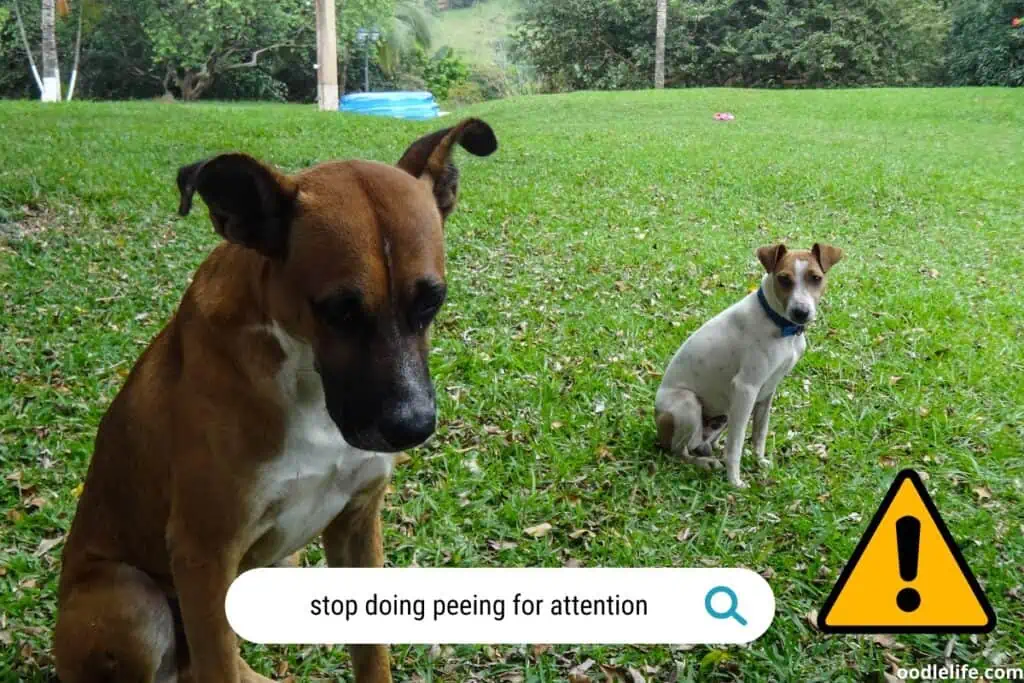
In this article, we will discuss how to identify the signs of attention-seeking peeing, explore the motivations behind it, and provide practical tips on how to address this behavior. Through patience, consistency, and understanding, you will be able to support your dog and help them adapt to their environment and your schedule, promoting a happier and healthier bond.
Attention-Seeking Pee: Reasons and Stress Levels
| Reason for Attention-Seeking Pee | Example | Stress Level (Stars) |
|---|---|---|
| Boredom | Spot has been home alone all day and decides to leave a puddle to get your attention when you return. | ★★☆☆☆ |
| Separation Anxiety | Every time you step out for groceries, Fido leaves a “gift” by the door, even if you’ve just taken him out. | ★★★★☆ |
| Jealousy | You’ve been cuddling the new kitten all day, and Rex decides it’s time for a game of “spot the puddle” to remind you he’s there too. | ★★☆☆☆ |
| Lack of Proper Training | Buddy hasn’t quite grasped the concept of potty training and pees indoors to get you to take him outside. | ★★★☆☆ |
| Undiagnosed Medical Issue | Daisy has been peeing frequently and in small amounts, which could be a sign of a urinary tract infection or other medical issue. | ★★★★☆ |
Please note that these stress levels are subjective and may vary based on individual circumstances. It’s essential to address the underlying issue causing the attention-seeking behavior and consult with a veterinarian if you suspect a medical problem.
Understanding Dog Peeing Behavior
Dog peeing behavior is an essential aspect of pet ownership, as it can provide insights into your dog’s well-being and emotional state. This section will explore some of the reasons dogs exhibit certain peeing behaviors, such as marking territory, health issues, and submission.
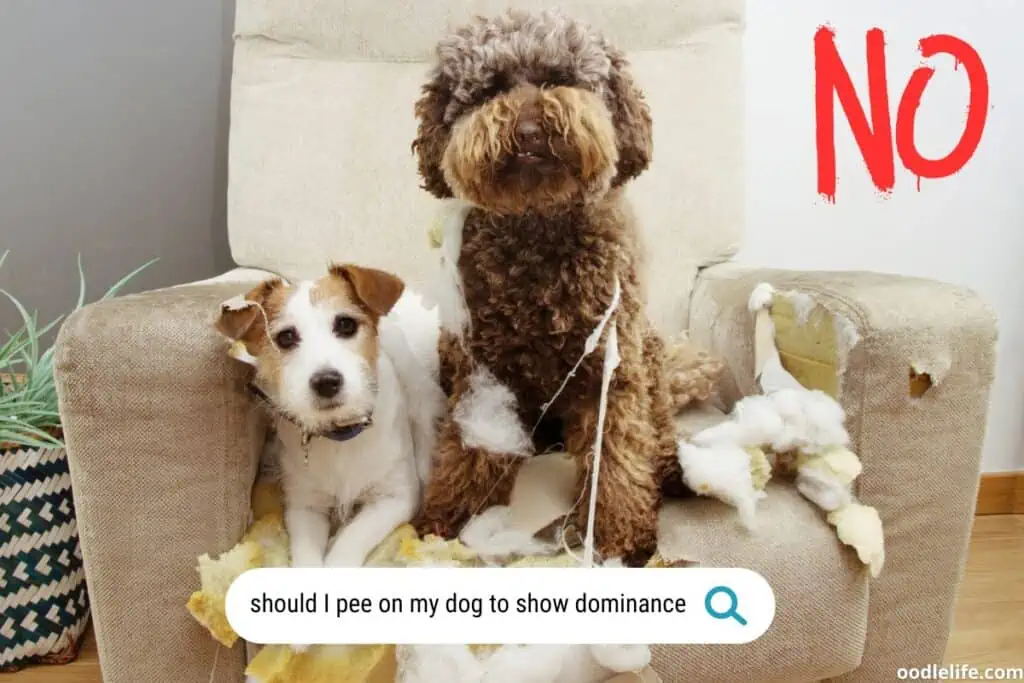
Marking Territory
Dogs, like many other animals, have an instinctual need to mark their territory. This is done to establish a sense of ownership and to communicate with other dogs that pass by. While it may seem as though your dog is simply relieving themselves, urine marking is a form of chemical communication that conveys a wide variety of information.
For example, your furry friend might mark to:
- Secure a potential mate
- Establish dominance or hierarchy
- Advertise their presence to other dogs
Male dogs typically engage in this behavior more than females, and neutering often reduces the desire to mark territory.
Health Issues
Changes in your dog’s peeing behavior could also be indicative of underlying health issues. Increased frequency, straining to urinate, or producing an unusual odor can signal a variety of medical concerns, such as:
- Urinary tract infections
- Bladder stones
- Diabetes
- Kidney disease
If you suspect your dog may be experiencing a health issue related to their urination habits, consult your veterinarian right away to ensure proper diagnosis and treatment.
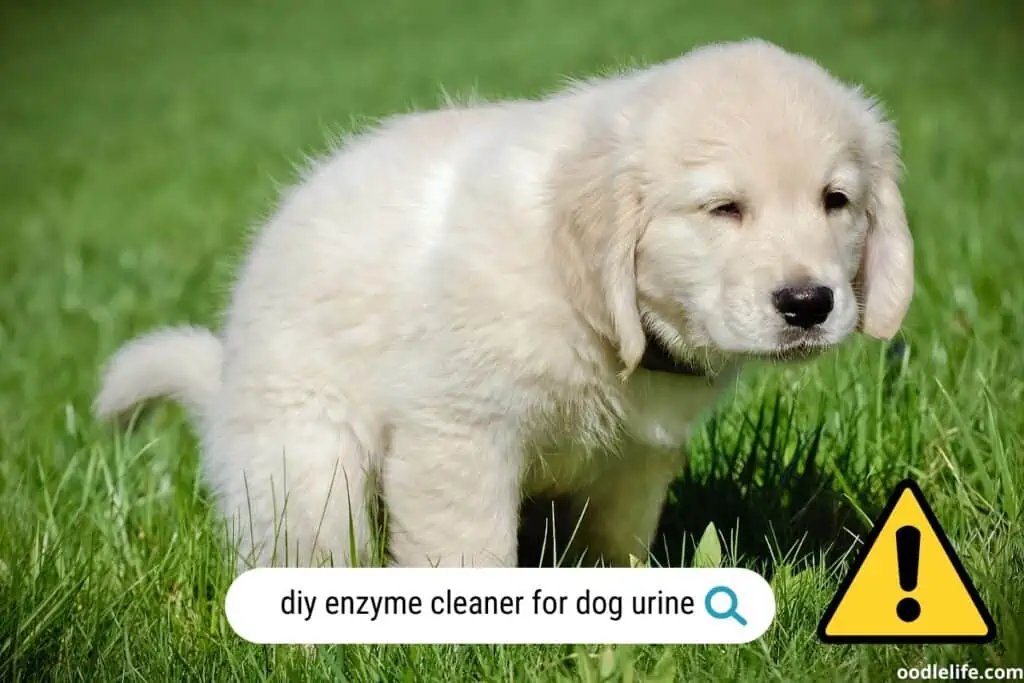
Submission
Submissive urination is another common dog peeing behavior. It typically occurs when a dog experiences excitement, anxiety, or fear, or when they wish to acknowledge the dominance of another individual, be it human or canine.
For instance, this behavior might manifest in situations like:
- Greeting their owner after a period of absence
- When approached by a more dominant dog
- During high-stress events, such as thunderstorms or fireworks displays
Understanding the reasons behind why your dog displays certain peeing behaviors can aid in building a stronger bond with your furry friend and help you address any issues that may arise. Remember, when it comes to our four-legged companions, there’s always more than meets the eye.
Identifying Attention-Seeking Peeing
Understanding whether your dog is peeing for attention requires observing specific signs and behaviors. In this section, we’ll explore how to identify attention-seeking peeing by looking at changes in routine, vocalizations, and body language.
Changes in Routine
One of the first indicators of attention-seeking peeing could be changes in your dog’s regular routine. If you notice that your dog is peeing indoors when you are present or during times when they typically don’t, this could be a sign that they are trying to get your attention. For instance, if your dog has been house-trained and is suddenly having accidents when left alone, this may indicate that they are seeking attention.
Vocalizations
Another indicator of attention-seeking behavior is vocalizations. A dog might whine, bark, or make other noises before or during the act of peeing to grab your attention. If you observe this behavior, it’s essential to understand the underlying reason and address it accordingly. Remember not to overreact or scold your dog in these situations, as it might reinforce the undesired behavior.
Body Language
Observing your dog’s body language can also provide valuable insights into whether they are peeing for attention. In the case of submissive peeing, a dog might crouch, tuck their tail, or lie down on the floor while urinating as a way to show submission and fear. On the other hand, if your dog is peeing for attention, they might look at you directly after peeing or seem playful, waiting for your response.
Recognizing the difference in body language is crucial to address the behavior adequately and ensure your furry friend’s well-being.
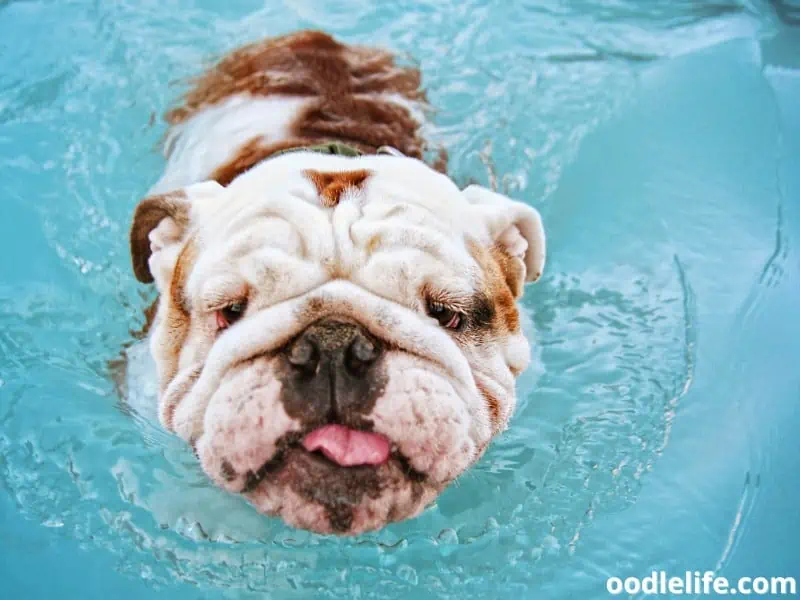
Addressing the Behavior
When managing a dog that pees for attention, it’s critical to address the issue in a practical and consistent manner. This section will discuss a few key strategies in handling attention-seeking behaviors in dogs, such as consistent training, meeting your dog’s needs, and positive reinforcement.
Consistent Training
One of the most effective ways to address a dog’s attention-seeking behavior is through consistent training. Dogs thrive on routine and predictability, so providing them with a structured environment can help mitigate unwanted behaviors.
- Set specific house rules and stick to them.
- Establish routines for feeding, walking, and playtime.
- Use consistent commands and verbal cues for desired behaviors.
By maintaining a consistent training regimen, your dog will have a better understanding of what is expected and be less likely to resort to attention-seeking behaviors like peeing for attention.
Meeting Your Dog’s Needs
Another crucial aspect of addressing attention-seeking behavior in dogs is meeting their basic needs. A well-cared-for dog is less likely to develop unwanted behaviors.
- Provide an appropriate amount of physical exercise by going for daily walks or playing fetch.
- Offer mental stimulation through puzzle toys, training exercises, and interactive play.
- Ensure your dog has a comfortable and safe environment to rest and relax.
Taking steps to meet your dog’s physical, mental, and emotional needs will help discourage attention-seeking behavior and promote a happy, well-adjusted pup.
Positive Reinforcement
Using positive reinforcement techniques can also help in addressing a dog peeing for attention. This approach focuses on rewarding desirable behaviors and ignoring or redirecting undesirable ones.
- Praise and reward your dog when they exhibit good behaviors with treats, toys, or affection.
- Ignore your dog’s peeing for attention and calmly clean up the mess without scolding.
- Redirect your dog to a more appropriate behavior, such as a command or a specific task, when they exhibit attention-seeking behaviors.
By emphasizing and rewarding positive behaviors, you can gradually reduce the frequency of attention-seeking behaviors, such as peeing for attention, and encourage more desirable behaviors instead.
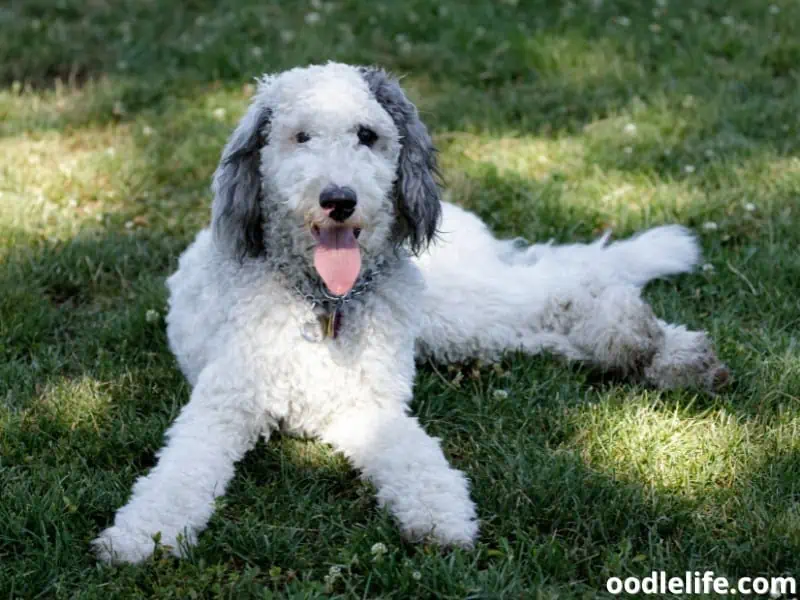
When to Consult a Professional
It’s natural to feel frustrated when your canine companion continually uses peeing as a way to grab your attention. While it’s essential to give your dog the love and attention they deserve, it’s also important to recognize when it’s time to consult a professional.
First, if you’ve tried various strategies to curb this behavior but still find your furry friend leaving unwanted puddles, it may be time to seek expert advice. A professional dog trainer or behaviorist can help guide you through the process of addressing your dog’s attention-seeking antics.
Second, if the problem persists for more than a week after neutering, it’s wise to consult with your veterinarian. There could be underlying medical issues contributing to your dog’s incontinence that need to be addressed.
In some cases, working with a licensed veterinary behavior specialist may be necessary to tackle the issue of submissive or excitement peeing. These experts have the knowledge and experience to pinpoint and address the root cause of your dog’s behavior.
Remember, while an occasional accident might bring a momentary chuckle or sigh, dealing with constant attention-seeking peeing is no laughing matter. Tapping into professional resources can be a game-changer, aiding you in maintaining a harmonious and puddle-free relationship with your beloved pet.